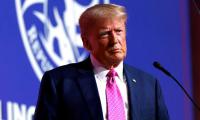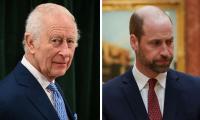China’s “twin sessions” or Lianghui, the annual gatherings of the Chinese People’s Political Consultative Conference (CPPCC) and the National People’s Congress (NPC), started in Beijing on 4 March. Last year, the twin sessions were delayed by two months due to the threat of the pandemic. No GDP growth target for China was set in 2020 amidst the uncertainties of COVID-19 but this year we observe a more confident China, which has come to grips with the challenges.
China’s twin sessions draw a lot of international attention too because the decisions taken by the Chinese lawmakers and political advisers, not only guide and influence the country’s development for the years ahead, but also have an impact internationally. China, a country with a population of 1.4 billion, has just declared a complete victory in eradicating absolute poverty, and will embark on a new journey with the next five-year plan.
At the 2021 Lianghui, China has announced that it will step up scientific research and development over the next five years and beyond, after the country’s top legislature approved an ambitious national policy blueprint. China’s Premier Li Keqiang vowed to pursue institutional reforms and introduce tax incentives to boost the country’s basic research and development (R&D) initiatives of manufacturing firms to 100 per cent, up from 75 per cent covering all industries, after the country’s 14th five-year plan and Vision 2035 development strategy was endorsed by nearly 3,000 delegates of the NPC.
President Xi Jinping had initially mentioned “Vision 2035” in 2017 as a platform through which China will have the capacity to “achieve socialist modernization”. The commitment in the twin sessions 2021 brings a sharpened focus on basic research and development to drive more home-grown tech innovation, which forms an integral part of the latest five-year plan, which spells out the country’s economic goals for 2021 to 2025. This will also provide a strong foundation for achieving China’s economic goals.
It is noteworthy that while basic research has been discussed in nearly every twin session but in 2021, it has been highlighted with strong emphasis. The plan also mentions the fields of artificial intelligence, quantum information and blockchain technology for the first time. Blockchain plays a key role in the country’s digital economy under President Xi Jinping’s Vision 2035 strategy. Blockchain is a technology that enables the creation of a shared and cryptographically-secured digital ledger, and was mentioned for the first time in a draft of China’s national five-year plan. State-level support for quantum computing research, meanwhile, augurs well for more domestic companies to take part in this field.
It is noteworthy that China spent a record US 2.2 trillion yuan (US$339 billion) on R&D in 2019, which represented 2.23 percent of China’s GDP — another record high. That marked a big improvement since 2000, when the country’s R&D expenditure made up 0.9 per cent of GDP. In the same period, US R&D spending accounted for 2.6 per cent of its GDP, according to Chinese government data and the Organization for Economic Cooperation and Development.
China watchers will be interested to note eight core areas for the country to become a manufacturing superpower. These include: rare earth and special materials, robotics, aircraft engines, new energy vehicles and smart cars, high-end medical equipment and innovative medicine such as vaccines, agricultural machinery, major equipment used in shipbuilding, aviation; high-speed-rail, and industrial applications of China’s Beidou global navigation satellite system.
The rest of the world was watching with concern when President Trump had decided to adopt a path of confrontation with China, imposing trade tariffs and shooting barbs as well as hurling accusations. The new US President Joe Biden is likely to pursue a hard policy against China but in a bid to gain a grip on the issue, he has chosen a number of China specialists for key positions in his administration. US Secretary of State Antony Blinken and White House national security adviser Jake Sullivan plan to discuss “a range of issues” with Yang Jiechi, China’s most senior foreign policy official, and Foreign Minister Wang Yi, this week in Anchorage, Alaska, in a meeting that will address a range of issues, including those where the two sides have “deep disagreements’’.
In the coming years, China will move faster to pursue a new development pattern featuring “dual circulation,” where the internal and external markets can reinforce each other, with the domestic market as the mainstay.
In this process, the world community expects China can give full play to the advantage of its super-large market and continue to expand it by boosting domestic consumption. Beijing’s firm commitment to greater opening-up means more dynamics and benefits for the global economic recovery and sustainable growth.
The world economy is struggling with a deep recession under the shadow of the pandemic. As the virus is still spreading, the road to recovery will be long and highly uncertain.
China has largely brought the pandemic under control and became the only major economy with positive growth last year, and that will give more certainties and possibilities to the world in this stormy moment. Global investors have cast their votes of confidence in the Chinese market. According to the United Nations (UN) Investment Trends Monitor report in January, global foreign direct investment in 2020 has slumped by 42 percent from 1.5 trillion US dollars in 2019, while China saw a 4-percent increase in this field in the same year. In the next five years, China will continue to promote multilateralism and build an open world economy with its global partners so as to boost common development.
Last year, China signed the Regional Comprehensive Economic Partnership free trade deal with 14 other countries, and concluded negotiations for an investment agreement with the European Union. Those achievements were truly hard-won against the backdrop of a raging outbreak and rising tide of isolationism and protectionism.
The summation comes in the words of Renmin Ribao, who declared that “General Secretary Xi Jinping has stood at the strategic height of building a well-off society in an all-around way and realizing the Chinese dream of the great rejuvenation of the Chinese nation.”
All necessary arrangements for the re-polling have been completed, says ECP spokesperson
Regarding ban on student unions, Senator Masroor Ahsan calls for clear guidelines to govern their operation
Chairman Rai Hassan Nawaz presides over meeting at Railway Headquarters in Lahore
Seminar to highlight remarkable efforts of probationary officers in addressing critical societal challenges
Minister highlights nation’s mental health challenges and stressed need for collective action to address them
PAC, last month, directed Sindh HEC to investigate matter and submit report within two weeks







